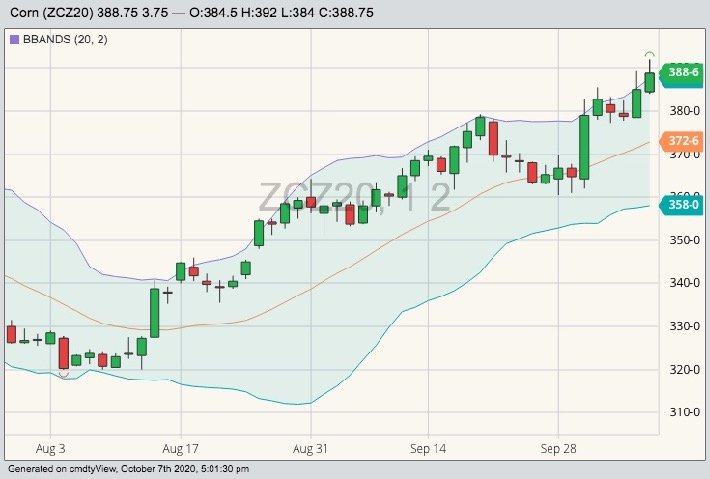MarketsFarm — Expect ending stocks for U.S. corn and soybeans to be lower in the upcoming supply and demand report from the U.S. Department of Agriculture (USDA), said Scott Capinegro of Barrington Commodities at Barrington, Ill.
USDA is scheduled to release its next world agriculture supply and demand estimates (WASDE) on Friday at 11 a.m. CT.
The average estimate coming out of the markets has corn carryout for corn dropping 15.6 per cent from the 2.503 billion bushels USDA estimated last month, to 2.113 billion, according to CHS Hedging.
Read Also

U.S. livestock: Cattle mixed on technicals, profit taking after tight supply rally
Chicago | Reuters – Chicago Mercantile Exchange cattle futures ended mixed on Wednesday as tight supplies and higher choice beef…
Corn yields are projected to slip from 178.5 bu/ac., to 177.7. That means production is expected to decline from September’s forecast of 14.9 billion bushels, to 14.808 billion.
As for soybeans, CHS reported the markets expect the carryover to fall 19.8 per cent from the 460 million bushels in the September WASDE to 369 million in the October report on Friday.
Soybean yields are expected to slip from 51.9 bu/ac. to 51.6, which would result in lower production, going from 4.313 billion bushels to 4.282 billion.
Also, ending stocks for U.S. wheat are projected to decline from 925 million bushels estimated in September, to 887 million.
Capinegro said farmers are now in the thick of harvest with corn and especially soybeans, and “the harvest is telling us that something is happening here. The numbers may not be out there like people thought.
“My two rules of thumbs are, one, when the carryout goes down it’s bullish. Two, when harvest is going on and we don’t have a break [in prices], that’s bullish.”
Capinegro noted dry conditions have affected crops in Russia, Ukraine and, in particular, South America.
“They’re due for a little rough period of weather,” he said of South America. “They’re been having great weather for the last three to four years,” he added, noting the continent’s dryness has come at planting time.
While there have been delays for South American farmers getting their soybeans planted, Capinegro believes they’re not too far behind. However, if dry conditions persist, there could be problems.
“Their early beans aren’t going to be early at the end of December. Their supply starts in early January and if their crops get hurt, where else is everybody going to go, but here?” he added, referring to the U.S.
That said, Capinegro expects the uptrend on the Chicago Board of Trade to continue.
“It’s amazing how, since the August [WASDE], when they took the 97 million corn acres down to 92 million, and we triple-bottomed at the low end at US$3.20 per bushel, how this market has turned around.”
— Glen Hallick reports for MarketsFarm from Winnipeg.
















